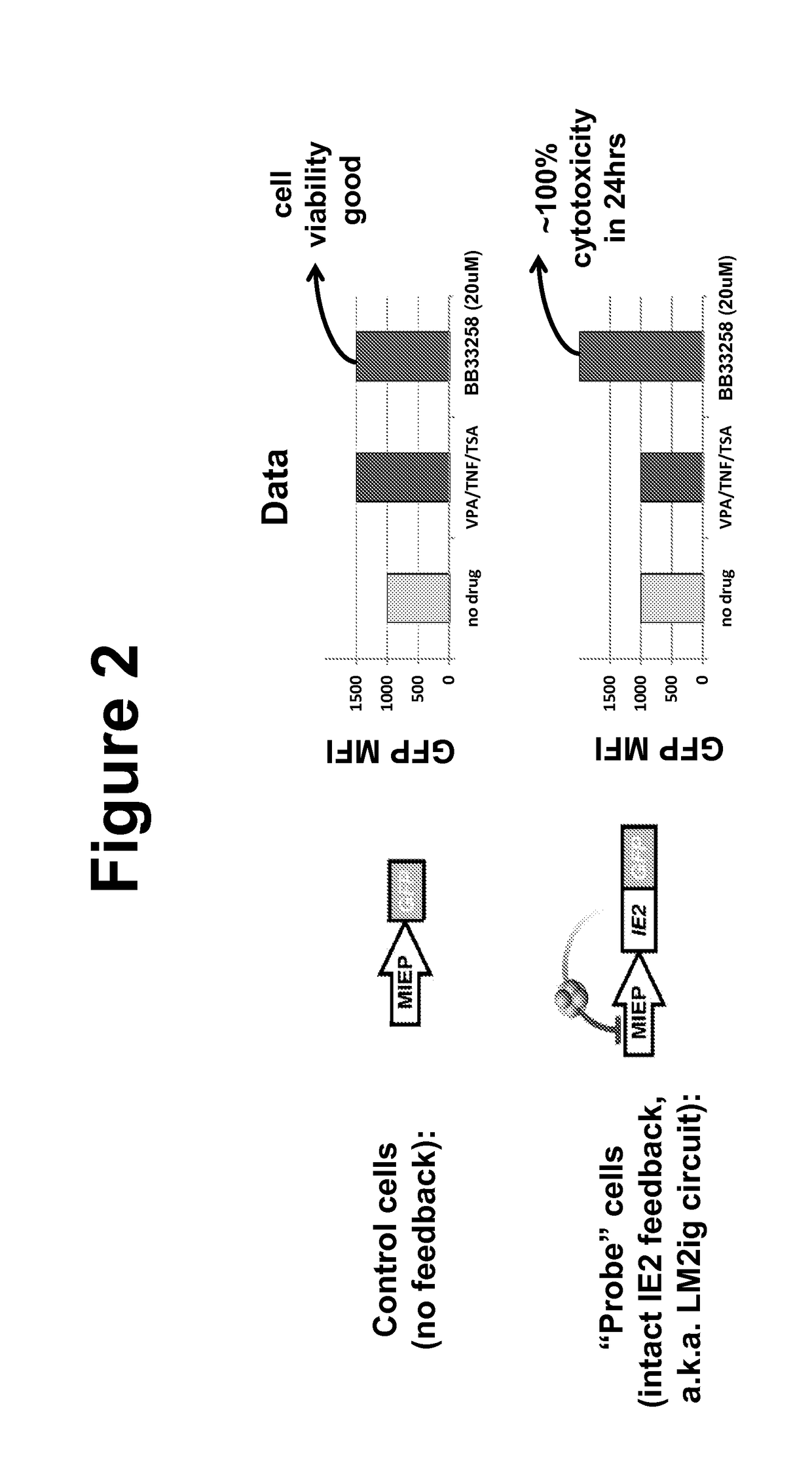Methods for Treating a Cytomegalovirus Infection
- Summary
- Abstract
- Description
- Claims
- Application Information
AI Technical Summary
Benefits of technology
Problems solved by technology
Method used
Image
Examples
example 1
Effects of Bisbenzimidazole Compounds on CMV Replication
Materials and Methods
[0093]Unless otherwise noted, all references to CMV are to human CMV (hCMV).
Cell-Culture Conditions and Drug Perturbations
[0094]MRCS fibroblasts and life-extended human foreskin fibroblasts (HFFs) (Bresnahan and Shenk, 2000) were maintained in Dulbecco's Modified Eagle's Medium (DMEM) supplemented with 10% fetal bovine serum (FBS) and 50 U / ml penicillin-streptomycin at 37° C. and 5% CO2 in a humidified incubator. ARPE-19 cells were maintained in a 1:1 mixture of DMEM / F-12 (Mediatech Inc.) with 10% FBS (HyClone) and 50 U / ml Penicillin-Streptomycin (Mediatech Inc.). Cells were treated with a final concentration of 1 mM valproic acid (VPA) (Calbiochem™), resuspended in dimethylsulfoxide, for approximately 24 hours before imaging. Cells were treated with a final concentration of 400 nM TSA (Sigma-Aldrich) resuspended in dimethylsulfoxide, for 20-24 hours, a final concentration of 10 ng / mL TNF-α (Sigma-Aldrich) ...
example 2
bisBenzimide Binding Assay
Materials and Methods
[0124]A bisBenzimide binding assay protocol was performed as shown in FIG. 14. Serial dilutions for each CRS sequence were prepared. Each CRS sequence was held constant at 10 μM while BB33258 was titrated from 10 μM to 1 nM. All assays were performed at room temperature (˜25° C. in DPBS). Serial dilutions were pipetted into 96-well glass bottom plate and allowed to equilibrate for 3 hours at room temperature in the dark. Plates were then assayed for fluorescence intensity using Perkin-Elmer EnSpyre multimode plate reader. Scans from 370 nm to 580 nm for each sequence were obtained. Dilution concentrations and BB33258 combinations that saturated the PMT were excluded.
Results
[0125]The results are shown in FIGS. 15-19. As shown in FIGS. 15 and 16 BB33258 binds primarily to a specific tetranucleotide motif (TTTA). FIG. 17 shows hCMV CRS and rHCMV CRS saturation curves. FIG. 18 provides a graphs showing that mCMV did not saturate within the ...
example 3
Gel Shift Assay of IE2-CRS
Materials and Methods
[0126]IE2-MBP expressed in BL21 cells was purified using amylose column, and EMSA was performed for IE2-crs interaction as described in Macias, M. P., Stinski, M. F., 1993. PNAS. 90, 707-711.
Results
[0127]The results are shown in FIG. 20, which provides images of gel results for electrophoretic mobility shift assays (EMSA) using purified IE2 protein and DNA CRS target in the presence of various amounts of BB33258. The gels demonstrate binding of BB33258 to the CRS sequence.
PUM
| Property | Measurement | Unit |
|---|---|---|
| Time | aaaaa | aaaaa |
| Acoustic impedance | aaaaa | aaaaa |
| Therapeutic | aaaaa | aaaaa |
Abstract
Description
Claims
Application Information
 Login to View More
Login to View More - R&D
- Intellectual Property
- Life Sciences
- Materials
- Tech Scout
- Unparalleled Data Quality
- Higher Quality Content
- 60% Fewer Hallucinations
Browse by: Latest US Patents, China's latest patents, Technical Efficacy Thesaurus, Application Domain, Technology Topic, Popular Technical Reports.
© 2025 PatSnap. All rights reserved.Legal|Privacy policy|Modern Slavery Act Transparency Statement|Sitemap|About US| Contact US: help@patsnap.com



